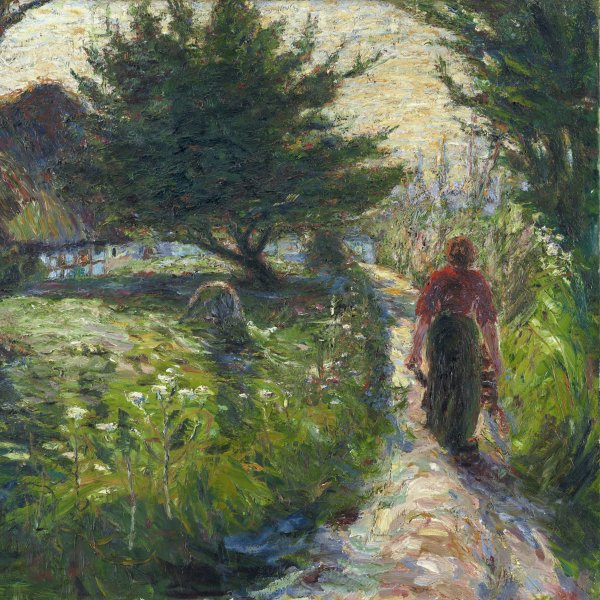Red Flowers
In 1906, after Emil Nolde’s exhibition at the Galerie Arnold in Dresden, Schmidt-Rottluff invited him to join the Die Brücke group in a letter dated 4 February: “one of Die Brücke’s undertakings is to attract any ferment of revolution, that is what its name wishes to proclaim [...]. And so, dear Mr Nolde, whatever you think and decide, we hereby wish to pay tribute to you for your tempests of colour. With our respects, and placing ourselves at your disposal, yours sincerely, Kunstlergruppe Brücke.” Nolde remained with them for little more than a year and a half, as the difference in age and criteria that separated him from the young Expressionists led to a number of disagreements.
That summer Nolde went to Guderup, a town on the Baltic island of Alsen, where he had rented a small fishermen’s house since 1903. During this period, in which he was visited by Schmidt-Rottluff, Nolde painted a set of pictures of flowers in the gardens of his friends the Burchards and the Wieds. One of the paintings from this series is the present Red Flowers, which is clearly influenced by the work of Van Gogh and the French Post-Impressionist painters, as evidenced by the brilliant colour and the thick, paint-laden brushstrokes. The cheerful colours and sense of happiness conveyed by these paintings is surprising, as they were executed at a time of notable financial hardship and sadness in his personal life on account of his wife Ada’s serious illness.
The painting was acquired by Ernst Rump (1872–1921) during the exhibition of Nolde’s works at the Galerie Commeter in Hamburg in 1910 and passed through the hands of several members of the family until it was bought by Baron Thyssen in 1980.
Paloma Alarcó









